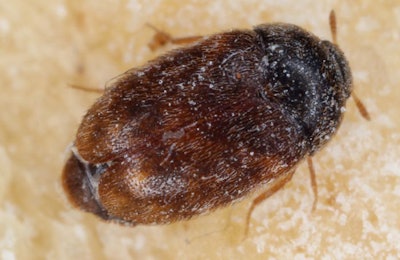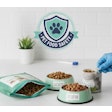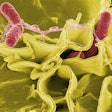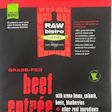
New research on the Khapra beetle (Trogoderma granarium) finds that the known dry foods pest is severely threatening global food security, which could impact the pet food industry, as well. It is classified as one of the top 100 invasive species on the planet, due to its ability to survive for long periods of time as a diapausing (dormant) larva, making its spread through vessels and international trade highly effective.
Khapra beetle found in dog food
The Khapra beetle has a varied diet and is known to have a preference for over 100 different dry food types (plant- and animal-based). Alongside barley, rice, wheat, maize and many other commodities that are base ingredients for pet food manufacturers, the Khapra beetle also directly feeds on dry pet foods. In the 2019 Annual Review of Entolomology study, Biology and Control of the Khapra Beetle, Trogoderma granarium, a Major Quarantine Threat to Global Food Security, stored dog food is specifically cited as having been infested, in data from 1955 to 2013.
Professor Christos Athanassiou, Ph.D., the lead author of the 2019 study, notes that although the Khapra beetle is a quarantine species, caution must be continually employed in food supply logistics to ensure that the species is controlled. “Its presence has been recorded mainly in Asia, but has been found occasionally in other countries, with an increase in the number of interceptions,” he explains.
Monitoring is necessary for ensuring species control
Although native to South Asia, where it was first described as a dry foods pest in 1894, newest analysis of the beetle’s interceptions by customs authorities at global ports of entry finds that it is currently spread throughout Asia, the Middle East and Africa. While it has been eradicated in major global pet food markets, such as Europe and North America, detection and continuous monitoring remain necessary to ensure control of the species.
“Phytosanitary inspection is one of the key elements for its early detection and estimation of its presence. In this effort, the development of trapping devices and sampling protocols would greatly limit its further spread and establishment in new areas,” Athanassiou noted. “At the same time, there are certain measures, such as proper hygiene conditions, prevention measures and application of insecticides that can effectively control this species.”
As developing countries raise their living standards and begin to investment in pet foods, it is important to assess the threat of the Khapra beetle. “The larvae of the khapra beetle are found inside packages of different types of food, including pet food, which is clearly indicative that resistant packaging and proper disinfestation programs in packaged food should be the starting point toward its control,” Athanassiou said.

















